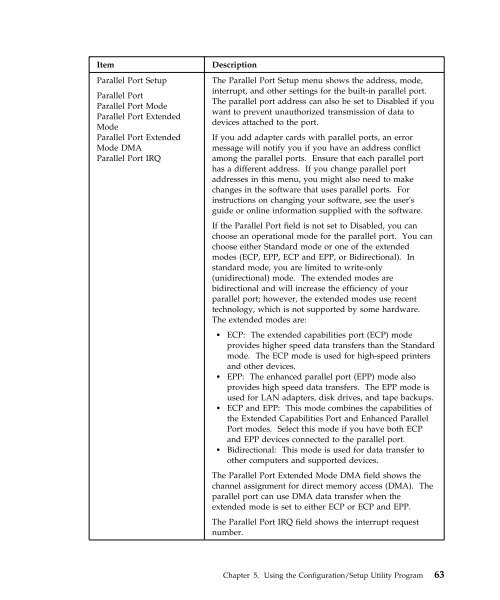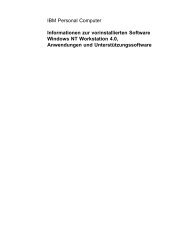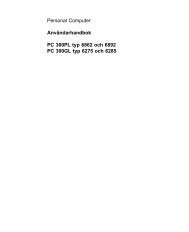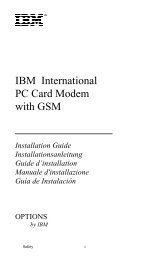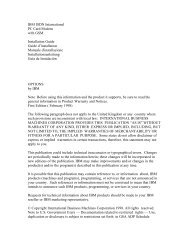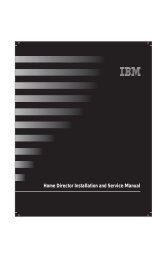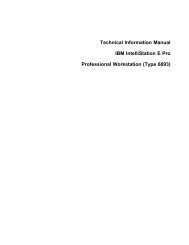IntelliStation E Pro User Guide Professional ... - FTP Directory Listing
IntelliStation E Pro User Guide Professional ... - FTP Directory Listing
IntelliStation E Pro User Guide Professional ... - FTP Directory Listing
You also want an ePaper? Increase the reach of your titles
YUMPU automatically turns print PDFs into web optimized ePapers that Google loves.
Item Description<br />
Parallel Port Setup<br />
Parallel Port<br />
Parallel Port Mode<br />
Parallel Port Extended<br />
Mode<br />
Parallel Port Extended<br />
Mode DMA<br />
Parallel Port IRQ<br />
The Parallel Port Setup menu shows the address, mode,<br />
interrupt, and other settings for the built-in parallel port.<br />
The parallel port address can also be set to Disabled if you<br />
want to prevent unauthorized transmission of data to<br />
devices attached to the port.<br />
If you add adapter cards with parallel ports, an error<br />
message will notify you if you have an address conflict<br />
among the parallel ports. Ensure that each parallel port<br />
has a different address. If you change parallel port<br />
addresses in this menu, you might also need to make<br />
changes in the software that uses parallel ports. For<br />
instructions on changing your software, see the user's<br />
guide or online information supplied with the software.<br />
If the Parallel Port field is not set to Disabled, you can<br />
choose an operational mode for the parallel port. You can<br />
choose either Standard mode or one of the extended<br />
modes (ECP, EPP, ECP and EPP, or Bidirectional). In<br />
standard mode, you are limited to write-only<br />
(unidirectional) mode. The extended modes are<br />
bidirectional and will increase the efficiency of your<br />
parallel port; however, the extended modes use recent<br />
technology, which is not supported by some hardware.<br />
The extended modes are:<br />
� ECP: The extended capabilities port (ECP) mode<br />
provides higher speed data transfers than the Standard<br />
mode. The ECP mode is used for high-speed printers<br />
and other devices.<br />
� EPP: The enhanced parallel port (EPP) mode also<br />
provides high speed data transfers. The EPP mode is<br />
used for LAN adapters, disk drives, and tape backups.<br />
� ECP and EPP: This mode combines the capabilities of<br />
the Extended Capabilities Port and Enhanced Parallel<br />
Port modes. Select this mode if you have both ECP<br />
and EPP devices connected to the parallel port.<br />
� Bidirectional: This mode is used for data transfer to<br />
other computers and supported devices.<br />
The Parallel Port Extended Mode DMA field shows the<br />
channel assignment for direct memory access (DMA). The<br />
parallel port can use DMA data transfer when the<br />
extended mode is set to either ECP or ECP and EPP.<br />
The Parallel Port IRQ field shows the interrupt request<br />
number.<br />
Chapter 5. Using the Configuration/Setup Utility <strong>Pro</strong>gram 63


